PURPOSE This study identifies girls with learned helplessness in middle school physical education coping mechanism and growth process. METHODS Eight female 9th graders who previously experienced learned helplessness in physical education were purposely selected with their physical education teachers’ recommendation. After individual in-depth interviews, data were analyzed using inducted data analysis. RESULTS Findings show that the girls could overcome learned helplessness through their own will and with support of peers and physical education teachers. Moreover, they have undergone various growth processes after coping with learned helplessness. Recently, they have self-confidence in physical education classes and desire to learn physical education. Additionally, results showed that the girls’ learning will in physical education influenced other subject matters, which helped them overcome new challenges in their school and daily lives. CONCLUSIONS Results can be used as practical guidelines to develop educational programs and create policies for girls with learned helplessness.
PURPOSE Professional Identity Formation (PIF) has become a core concept in various professional education fields as it emphasizes professionals’ dispositions as well as abilities. This study provides an overview of PIF and explores the characteristics of professional education programs that highlight PIF. Through this overview, the purpose of this study is to propose the ‘Professional Identity Matrix for Physical Education Teacher (PIMPET)’, which helps identify PE teachers’ Professional Identity (PI). METHODS This study suggests a guideline to understand PE teachers' PI based on the analysis of the current literature on PI and PIF. RESULTS The characteristics of PIF-based professional education programs were described according to three criteria: teaching content, method, and assessment. On the PIMPET framework, the components of PI formed by PE teachers can be categorized into nine domains which encompass the three identity dimensions (competence, knowledge, and disposition) and the three task areas (teaching, student, and administration). CONCLUSIONS The PIMPET framework allows for a comprehensive understanding of PE teachers’ PI and provides implications for the professionalism of PE teachers and PE teacher education.
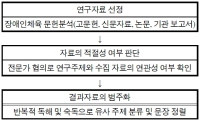
Purpose This study examines the Physical Education curriculum history of special schools, and then in-depth grasps the process of how the sports environment for the disabled has changed by age. Method The research method was literature review analyzing papers, reports and newspapers. For the concrete process, this study verified the relationship between the research subject and the collected data through experts and historians with disabilities to verify the sports data for the disabled. Results First, the process of physical education management of special schools is as follows. in the 1940's and 50's special schools, physical education was carried out simply by gymnastics. but, special schools were differentiated by the characteristics of the disabled, and the institutional foundation for physical education was also imitated by the 1960s, 1970s and 1980s, special schools were shortened in physical education time due to the increase in the number of courses and the strengthening of disability coping programs. in the 1990s, as special sports curriculum was established, customized prescription for students with disabilities was implemented. Second, the process of changing disability sports is as follows. In the 1960s and 1970s, disability sports were mainly focused on special schools, while in the 1980s, disability sports were expanded by the government. in particular, the hosting of the 88 Seoul Olympics and Seoul Paralympics provides an opportunity to equip the disabled with a system, organization and facilities. in the 1990s disability sports was meaningful in terms of academic progress, and with the quantitative growth of the 1980s and the academic foundations of the 1990s, disability sports in the 2000s provided a legal basis and improved welfare conditions for the disabled. In the future, it is necessary to find a way to solve the value of physical education for the disabled more reasonably.

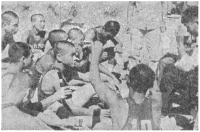
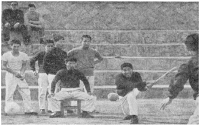
Purpose The purpose of this narrative inquiry was to explore the educational meaning of managing a specialist physical education school (SPES) and to suggest policy supports. Methods Semi-structured interviews with a physical education teacher who had managed a SPES and document analysis were undertaken. Data collected were analysed using constructivist grounded theory. Results In telling, four themes were described, which include: backgrounds that the teacher took over the SPES, cases of reforming the SPES and its impacts, pressures from a private physical education alliance, and the SPES has a long road ahead. In re-telling, a need of re-conceptualizing public education based physical education career education and four policy supports were discussed. Conclusions Developing a range of models for SPES-community connection, exploring longitudinal effectiveness of managing SPES as physical education career education, and exploring effective SPES models for student-athletes are suggested as future research.
Purpose The purpose of this study is to suggest issues needed in the process of developing the next national physical education curriculum. Methods Data were collected from three different physical education curricula including the 2007 revised physical education curriculum, the 2011 physical education curriculum based on the 2009 revised curriculum and the 2015 revised physical education curriculum. Results Three findings emerged. Firstly, there was no clear conceptual relationships between physical activity value and subject competency. Secondly, the way in which physical activity value works as learning content area cannot offer helps to set the level of subject competency and to design physical education lessons that based on the subject competency. Lastly, the 2015 revised physical education curriculum has low level of clarity, usability and readability. Conclusions This study suggests the three different findings as issues that should be discussed in the development of the next physical education curriculum.
Purpose The purpose of this study is to investigate the direction of elective courses of high school physical education in preparation for high school credit system by examining the awareness of physical education teachers of general high school and the selection of elective courses by school for elective courses of 2015 revised high school physical education. Methods We surveyed the perceptions of physical education teachers through questionnaires and examined cases of the current status of 65 general high school programs, The results were analyzed by frequency. Results The results of the study are as follows: First, physical education teachers know the purpose of the course, but they know only about the nature of the subject for some subjects. Second, There was little need to open specialized subject courses for general high school students wishing to enter the physical education field. It should be helpful to cultivate 'basic skills for physical education' in selection of elective subject according to the course of physical education. Students in general high schools regarded ‘attention and interest’ as the most important factor when selecting physical education subjects. Third, the selection schedule of physical education elective courses was the highest in <physical education>, and in most schools, 10 to 12 units of physical education degree were organized. Conclusions The conclusion of this study is that the high school physical education elective subjects need to fully reflect the social needs of the physical education and students' preferences, and the physical education and elective courses for general high school students wishing to enter the physical education department should be reconstructed.

Purpose The purpose of this study was to examine students’ perceptions of girls’ participation in physical education(PE) in elementary schools and examine the impacts of a girl-friendly integrated program on children’s participation in PE classes. Methods The participants were 10 fifth graders (5 girls and 5 boys) and their teacher in an elementary school. Data which were collected from in-depth interviews with students, students’ journal entries, field observation, and teacher’s reflective journal entries were analyzed inductively. Results Findings revealed that boys perceived girls’ participation as passive, possessing a low level of skills, and staying at the peripheral position. Meanwhile girls expressed their desire to demonstrate their strengths in PE classes and were afraid of boys’ criticism regarding their lack of skills. There were also misconceptions and misunderstanding on girls’ PE participation between boys and girls. In order to resolve these issues, a girls-friendly integrative program was designed. based on the four guiding principles drawn from students’ perception: (1) from ignorance to interest, (2) from misunderstanding to understanding, (3) from sport skills to sport values, and (4) from competition to cooperation. The program integrated boys and girls for promoting active interaction and also integrated competence, knowledge, and dispositions to accommodate students’ various ways of PE participation. Findings revealed that the program had: (1) diversified students’ perceptions of PE participation, (2) promoted students’ diverse and active participation, and (3) established classroom atmosphere which emphasized positive values.


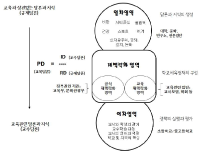
Drawing on Bernstein theory (1990, 1996) of pedagogic discourse, this study is aimed at exploring the construction of pedagogical meaning in physical education policy in Korea and providing critical implications for the development of policies for physical education and school sport. Both open-ended questionnaires (n=22) and in-depth interviews (n=9) were conducted. The collected data was commissioned by an inductive data analysis to look at patterns of regulative discourses embedded with physical education policy influencing on teachers’ educational practice. This study identified three main discourses constructing and constituting policies; sport, moral, and health. Sport discourse was the most dominant through the policy, in which two sub-discourses were central: ‘competition’ and ‘exclusion.’ Moral discourse had a strong connection with ‘crime reduction’ and ‘academic achievement.’ The structure of health discourse alleged increase in youth physical inactivity associated with sedentary living leads to an obesity epidemic. This study argued that there were significant dangers which dominant regulative discourses created a limited universe of possibilities for physical education. Therefore, we must not lose sight of the powerful discourses produced in the primary field, which have an impact on shaping forms of policy and practice in physical education. Furthermore, we need to examine in detail forms of physical education practice in order to achieve alignment in the school practice with current dominant discourses.

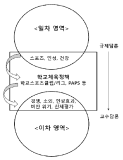

The purpose of this study was (1) to develop a archery lesson using forced connection method-sportcasting for cultivating collaborative problem-solving competencies, and (2) to apply and to examine the responses of students after physical education(PE) lesson. A archery lesson of Understanding-Performance-Appreciation step was developed according to LfPE(Lee, 2014) using backward curriculum design. Participants were tenth grade students (N=148) in a high school. Open-ended question used to collect the data. The analysis of data indicates that students expressed features in lessons. Six features are (a) 朋友信之, (b) 君子不器, (c) 能竭其力, (d) 觀其所由, (e) 溫故知新, (f) 思而不學. In-depth interviewers were carried out for further analysis of the answers to the questionnaires. The results are as follows. First, 朋友信之 means lesson cultivating collaborative problem solving competencies. Second, 君子不器 means pleasant and funny lesson. Third, 能竭其力 means lesson cultivating self management ability. Fourth, 觀其所由 means lesson cultivating appreciativeness for archery. Fifth, 溫故知新 means lesson improving the status of PE teacher and school. This study concluded that a archery lesson generated fun and interest for students. Implication for developing lesson using LfPE, utilize and transform forced connection method-sportcasting in PE were discussed.


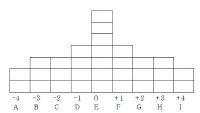
The purpose of this study was to analysis of perception types for gender equality of middle school students in P.E. class. 90 students in the specialized middle school located in K city, were selected for the subjects based on the theory of Q methodology. Q samples were 31 Q statements finally extracted from the total of 120 statements after the experts' consultation. The final 35 selections were surveyed to be forced distribution by the respondents to the statement of their positive, neutral, negative frequency distribution of the total score nine points. Factor analysis was conducted by QUANL-PC program and the following conclusions were derived by the factors centered on those over one. First, the image types for middle school students in the coed physical education class on gender equality were appeared into total of 4 categories, physical education classes without discrimination, peer-cooperative to create friendly atmosphere, physical education class to the possibility for anyone, gender equality class and there were subjective differences in each types. Second, five Q statements commonly formed among each types of the physical education on gender equality for coed middle school students were derived.
